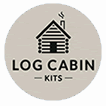Blog
Call Now 01342 477774
Sourcing Timber for Our Cabins
Log Cabin Kits
The Importance of Sustainable Timber Sourcing
At Garden Adventure, we take pride in our commitment to sustainability and environmental responsibility. One of the key components of our suppliers cabin manufacturing process is the timber thay they use. In this blog post, we’ll delve into our timber sourcing practices, detailing how we ensure that the timber used in our cabins is sustainable, high-quality, and environmentally friendly.
1. Certified Sustainable Sources
Timber Cabins source their timber from certified sustainable forests that adhere to rigorous environmental and social standards. These Scandinavian forests are responsibly managed to ensure the long-term health and viability of the ecosystem, as well as the well-being of local communities. By choosing timber from certified sources, they support responsible forestry practices and contribute to the conservation of natural habitats.
2. Chain of Custody Certification
To maintain transparency and accountability throughout the supply chain, Timber Cabins ensure their timber suppliers hold chain of custody certification. This certification verifies that the timber has been responsibly harvested, transported, and processed according to established standards. By tracing the origin of the timber from forest to finished product, they can guarantee its sustainability and legality.
3. Species Selection and Diversity
Timber Cabins carefully select timber species that are well-suited for cabin construction in terms of strength, durability, and aesthetics. The range of timber species includes popular choices such as pine and spruce each offering unique characteristics and benefits. By diversifying their timber sources, they reduce the pressure on any single species or ecosystem, promoting biodiversity and resilience.
4. Responsible Harvesting Practices
Timber Cabins ensure that the timber used in their cabin kits are harvested using responsible and environmentally friendly practices. This includes selective logging, which minimises the impact on surrounding forests and allows for natural regeneration. They also prioritise non-destructive harvesting techniques that minimise soil disturbance and preserve habitat integrity for wildlife.
5. Waste Reduction and Recycling
In the manufacturing process, Timber Cabins strive to minimise waste and maximise efficiency by optimising timber usage and recycling leftover materials. Offcuts and waste wood are repurposed whenever possible, either for secondary products or as biomass fuel for energy generation. By reducing waste and promoting circularity, they minimise the environmental footprint and conserve valuable resources.
6. Continuous Improvement and Innovation
Timber Cabins are committed to continuous improvement and innovation in the timber sourcing practices. They actively seek out new technologies, materials, and techniques that allow to further enhance the sustainability and performance of our cabins. By staying at the forefront of industry developments, they ensure that our timber sourcing practices remain ethical, efficient, and environmentally sound.
Conclusion: A Commitment to Sustainability
In conclusion, our timber sourcing practices reflect our unwavering commitment to sustainability, quality, and environmental responsibility. By sourcing timber from certified sustainable sources, maintaining chain of custody certification, selecting diverse timber species, practicing responsible harvesting, minimising waste, and embracing innovation, we strive to create cabins that not only provide comfort and enjoyment but also protect and preserve the natural world for future generations.
Author – Martin Corby
Disclaimer: This information is subject to change and as such, is provided for informational purposes only and does not constitute professional advice. Readers are encouraged to verify the details independently.
